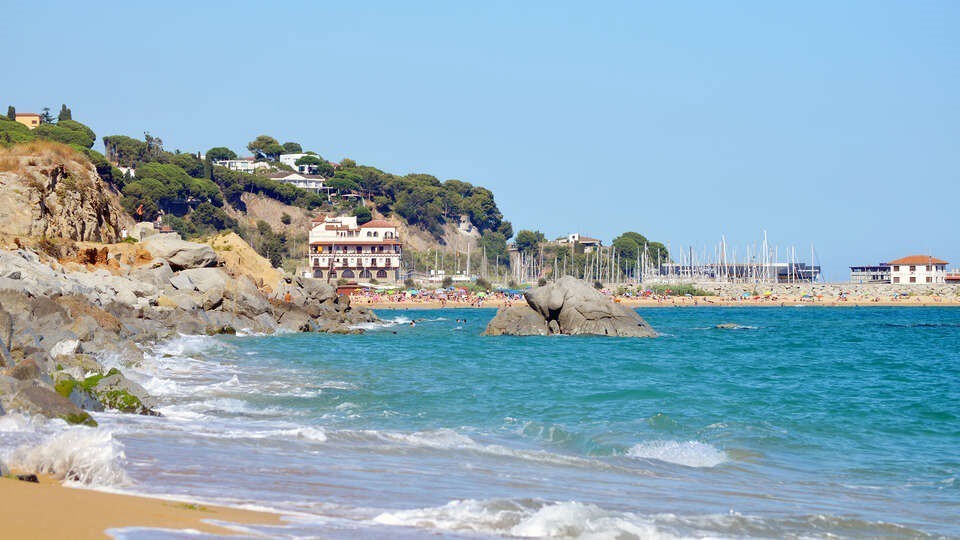
Holiday homes went up in the first quarter by 6.3% over the last year to €2,550 per square meter, 35% above the average value of first homes in coastal areas, according to Tinsa's 'Housing on the Coast 2023' report.
Considering both first and second homes, the average value recorded a year-on-year variation of 4.1% in the first quarter of 2023 in all 250 coastal towns analysed – up to €1,591/m2 – compared to the 3.5% increase observed during the same period in 2022.
Residential prices reflected year-on-year increases of 4%–5% on all four Spanish coasts analysed – the Mediterranean, Atlantic, North and Islands. The average growth over the last five years in the coastal towns has been 2.8% (compared to 4.3% nationally), with islands leading the way (3.9%), where competition for space is fiercer and softer on the north coast (1.8%).
The most common price range in the holiday segment is between €1,800 and €3,600/m2. Regarding single-family homes, there are "premium" locations where prices exceed €6,000/m2 and even very exclusive detached properties on the coast of the island of Mallorca with a unit value of up to €11,000/m2.
The islands of Mallorca, Ibiza, Formentera, Gran Canaria and Santa Cruz de Tenerife show the highest estimated prices for holiday homes, in line with a demand for high – mainly international – purchasing power. According to Tinsa technicians, the average second home value would be €6,000/m2 in the Balearic Islands. Next would be the province of Malaga (€3,400/m2), followed by Guipuzcoa (€3,300/m2), Santa Cruz de Tenerife (€2,900/m2) and Girona and Vizcaya, both at around €2,800/m2.
At the lower end, with the lowest values and mainly Spanish holiday demand, are the northern coast, with Galicia, Cantabria and Asturias (excluding the coastal stretches of the Basque Country), and the Region of Murcia. The lowest average second home values by province are located on the coast of Lugo (€1,100/m2), Murcia (€1,300/m2), Cantabria (€1,500/m2) and Tarragona (€1,700/m2).
9 out of 10 municipalities record price increases
Ninety-one per cent of the 250 towns on the Spanish coast analysed in the report saw an increase in the average price of housing (1st and 2nd residence) in the last year, according to Tinsa. The most considerable price increases (above 10%) are in the Balearic Islands (Manacor, Ses Salines, Llucmajor, Es Mercadal and Campos), Valencia (Canet d'En Berenguer, Sagunto, Meliana and L'Alfas del Pi) and Andalusia (Motril, Algeciras, Malaga and Manilva).
Only four municipalities reflect year-on-year decreases of more than 4% between January and March: Orihuela (5.6%), Deltebre (4.7%), Calvia (4.7%) and Gandia (4.5%). By province, the study revealed that the highest year-on-year variations in house prices in the last year are located on the coasts of the province of Malaga (7%), Granada (6.8%), Guipuzcoa (6.2%) and the Balearic Islands (5.8%).
In terms of absolute value, the highest price of first and second homes, above €3,000 per square meter, is on the island of Ibiza (Sant Jose de sa Talaia, Santa Eulària des Riu, Ibiza and Sant Antoni de Portmany) and in Calvia (Mallorca).
"In the Balearic Islands, the upward pressure on prices is structural, derived from a high concentration of foreign buyers (with higher salaries than locals) and a production model focused on tourism, which encourages holiday investments. This framework, coupled with the limited space as an island, restricts supply, increases competition and puts pressure on prices," the Tinsa study highlighted.
The capitals San Sebastian and Barcelona are also among the enclaves with the highest coastal prices, although, in their case, the residential market has influenced them.
Coastal demand is mainly on the islands and along the Mediterranean
The Ministry of Transport (Mitma) housing statistics reflect that in 2022, 287,313 transactions were reported in coastal areas (first and second homes), 10.2% more than in 2021.
Demand was driven by the islands (19.6% year-on-year) and Mediterranean coast (11.4%), while the Andalusian Atlantic stretch and the north coast recorded rates of change close to zero. Specifically, in 2022, sales increased in 15 of the 22 provinces with coastlines and fell in seven.
Increases are strong in the Canary Islands and Alicante, above 26%, followed by Girona, Granada and Malaga. The most marked reduction occurred in Lugo (-18%), and the coastal towns of provinces Huelva, Guipuzcoa, Cantabria and Cadiz recorded more contained declines.
"In some specific points in the islands, Valencia and Alicante, a certain overheating of demand was detected, which in the current European context of the eroding purchasing power of households in the face of inflation and increased financing costs should be moderated," specifies the report of coasts.
The housing supply on the coast slightly exceeds 2019 levels
Development activity in Spanish coastal towns increased in 2022 to slightly above 2019 levels. New construction permits approved last year in coastal markets accounted for 32% of the Spanish total and increased by 9.8% in the last year to 34,745 licences.
The rise in new construction was more moderate than the growth in demand, constrained by economic uncertainty and rising construction costs in an environment of high inflation and rising interest rates.
The Atlantic coast experienced a sharp downturn in development activity (-28% in 2022 compared to 2021), as did the north coast, which also reduced its number of permits (-5%).
Meanwhile, the islands and the Mediterranean coast increased activity by 20% and 15%, respectively, very much in line with the sales growth recorded in these areas.
The study combines value references in euros per square meter of housing in 250 towns along the Spanish coast from Tinsa's valuation activity with the results of a survey of technicians who regularly work in these areas and provides comprehensive and current information on prices, demand, supply, activity levels and residential stock.